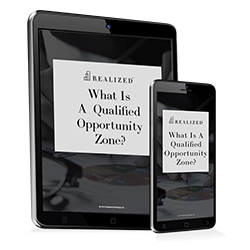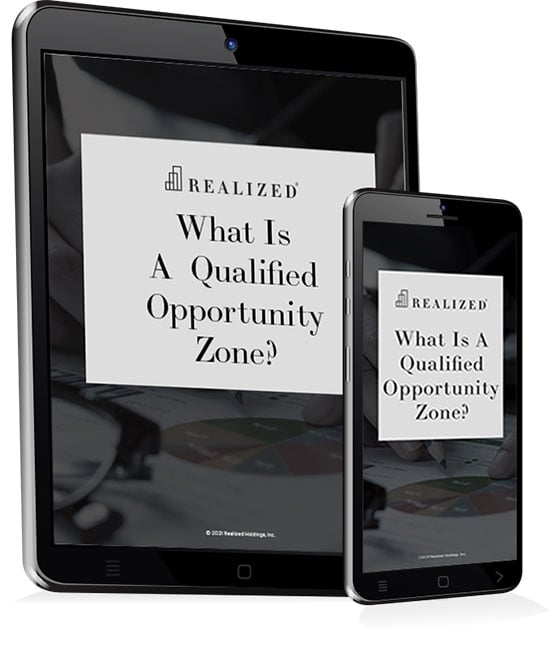
In June 2022, financial consulting firm Novogradac LLC reported the existence of 1,475 Qualified Opportunity Funds (QOF), which had raised a combined $30.49 billion. The QOFs channel investors’ capital gains to designated Qualified Opportunity Zones (QOZ) throughout the United States and U.S. territories, targeting different projects and opportunities. Some of the funds support workforce housing renovations and developments, while others invest in Qualified Opportunity Zone Businesses (QOZB) or Qualified Opportunity Zone Partnerships (QOZP). Still, others could focus on brownfield clean-ups or adaptive re-use.
The sheer number of available QOFs can make it difficult to find one that fits your needs. However, you can make your way through the plethora of QOFs by understanding their set-up and strategies, as well as the entities that oversee and manage them.
Different Funds, Different Purposes
The nearly 1,500 QOFs out there have one thing in common. They are set up either as identified funds or semi-blind funds. The identified funds have specific QOZ projects in the works, or under contract. Meanwhile, semi-blind funds are committed to raising capital first, then finding likely projects.
An identified fund is sometimes known as a project-specific fund, and is transparent. The targeted opportunities are already underway (or in the planning phases), allowing you to talk about them with the QOF manager – or to even visit the physical sites.
The downside? Over-commitment.
If the QOF targets a variety of opportunities, but can’t raise enough money to support them all, this could either delay or cancel projects. The end result, for you, might be a hefty tax bill.
On the other hand, a semi-blind fund (sometimes known as a blind-pool fund), raises capital before committing to the projects. If you put your capital gains into a semi-blind QOF, you won’t know the final investment portfolio for some time. On the bright side, a semi-blind QOF’s manager will bring enough cash upfront to a motivated seller, meaning a possible quicker closing of a targeted opportunity.
Projects, Timing, And Other . . .
There are risks to both types of funds, meaning your due diligence will need to unearth other information, such as the following:
A clear-cut strategy. Be wary of the QOF with an “anywhere, anytime, any type” strategy. A QOF should provide you with crystal clear direction, goals, and objectives, including property types and targeted geography. Different property types mean different risk and return potential. A fund geared toward renovating a warehouse into workforce housing in a lower-income neighborhood could offer a more reliable return than, say, a fund that focuses on a ground-up hotel development in the desert southwest.
In-depth compliance knowledge. First and foremost, be sure that 90% of assets the QOF holds are/will be in QOZs. This is very important, and could mean the difference between a many-years tax-deferral or a hefty tax bill. Asset holdings might be difficult to determine if you are examining a semi-blind fund, which is where a clear-cut strategy becomes even more important.
An understanding of timing. The QOZ program has its share of deadlines, and the QOF manager must know them all. For example, you have 180 days, from the time of your asset sale, to invest capital gains into a QOZ project. The QOF in which you have invested must adhere to that 180-day deadline, as well. Timing is everything when it comes to QOFs, QOZs, and tax deferrals.
Experience in the product type. The QOZ program is still new, meaning track records are few and far between. You can, however, examine the QOF manager’s street cred with various property types. If a QOF is in the business of adaptive re-use and workforce housing, the QOF’s manager – and staff – should have experience with similar projects. If that QOF manager decides to shift gears and target ground-up medical office buildings, this shouldn’t be a problem, as long as the manager partners with a developer or third party that is knowledgeable about that particular product.
Up-front fee structure. QOF managers aren’t renovating, re-adapting, or building out of the goodness of their hearts. They expect a return on their investments. And, they will charge an up-front fee for you to invest in their QOFs. Before forking over your capital gains, be sure that you understand the fee structure. If fees are in the fine print, are hard to understand, or the QOF manager won’t divulge them, find another fund.
And Knowing Your Investment Goals . . .
You can spend a great deal of time researching a QOF, its experience, set-up, and projected rate of return. But it won’t mean a thing, unless your investment goals are clear, from the outset.
For instance, while a QOF does offer many advantages, it might not be the best investment for you. It is highly illiquid, and will tie up your money for years. Furthermore, not all Qualified Opportunity Zone-designated areas are created equal; just because a geographic area has an “Opportunity Zone” designation on it does not mean it will lead to great returns.
Overall, we believe that the best way to decide on a QOF is to ensure that the fund has the product expertise, compliance knowledge, and transparency to add to your level of investment comfort. Proof of skill, relationships, and QOZ understanding can help manage the QOF investment risk.
This material is for general information and educational purposes only. Information is based on data gathered from what we believe are reliable sources. It is not guaranteed as to accuracy, does not purport to be complete and is not intended to be used as a primary basis for investment decisions.
No public market currently exists, and one may never exist, for the interests of any DST program. The purchase of interests in any DST program is speculative and is suitable only for persons who have no need for liquidity in their investment and who can afford to lose their entire investment.
There is no guarantee that the investment objectives of any particular program will be achieved.
The actual amount and timing of distributions paid by programs is not guaranteed and may vary. There is no guarantee that investors will receive distributions or a return of their capital. These programs can give no assurance that it will be able to pay or maintain distributions, or that distributions will increase over time.



